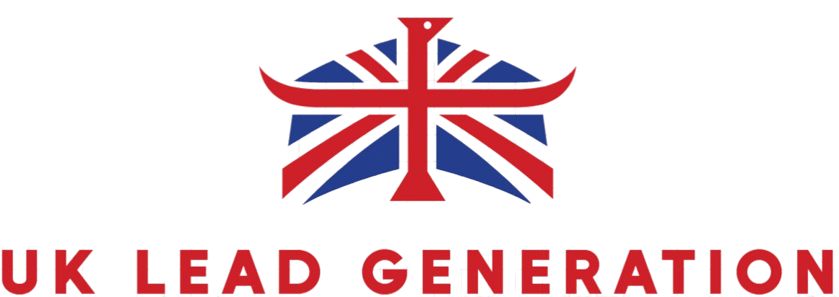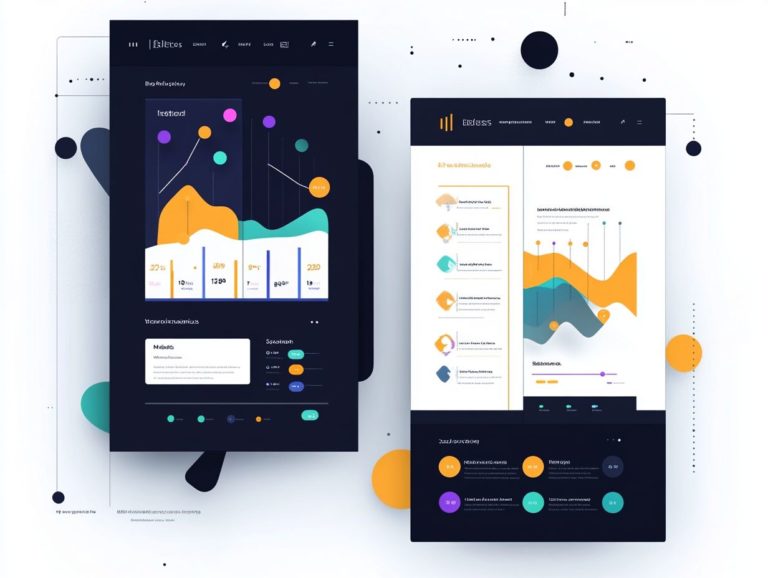“How to Align Content with Customer Journeys”
Let's Set Up Your Lead Generation Strategy
Fill out the form below, and our team will get in touch with you to create a tailored solution for your business.
In today’s fast-paced digital world, understanding the buyer’s journey is vital for your success! Each interaction your audience has with your brand plays a pivotal role in shaping their perception and influencing their purchasing decisions.
This article delves into the importance of aligning your content marketing strategy with the different stages of the customer journey. The customer journey describes the process you undergo from recognizing a problem to evaluating potential solutions and ultimately making a decision, which includes understanding your customer needs. The awareness stage is crucial as it marks the beginning of the buyer’s journey. You will learn how to identify your target audiences, effectively map your content, and leverage the appropriate types of content for each stage.
You will also discover strategies for measuring and enhancing content alignment, ensuring it resonates with your customers at every step of the way.
Contents [hide]
- Key Takeaways:
- The Importance of Aligning Content with Customer Journeys
- Creating a Customer-Centric Content Strategy
- Let's Set Up Your Lead Generation Strategy
- Effective Content Types for Each Stage
- Strategies for Measuring and Improving Content Alignment
- Let's Set Up Your Lead Generation Strategy
- Frequently Asked Questions
- Let's Set Up Your Lead Generation Strategy
Key Takeaways:
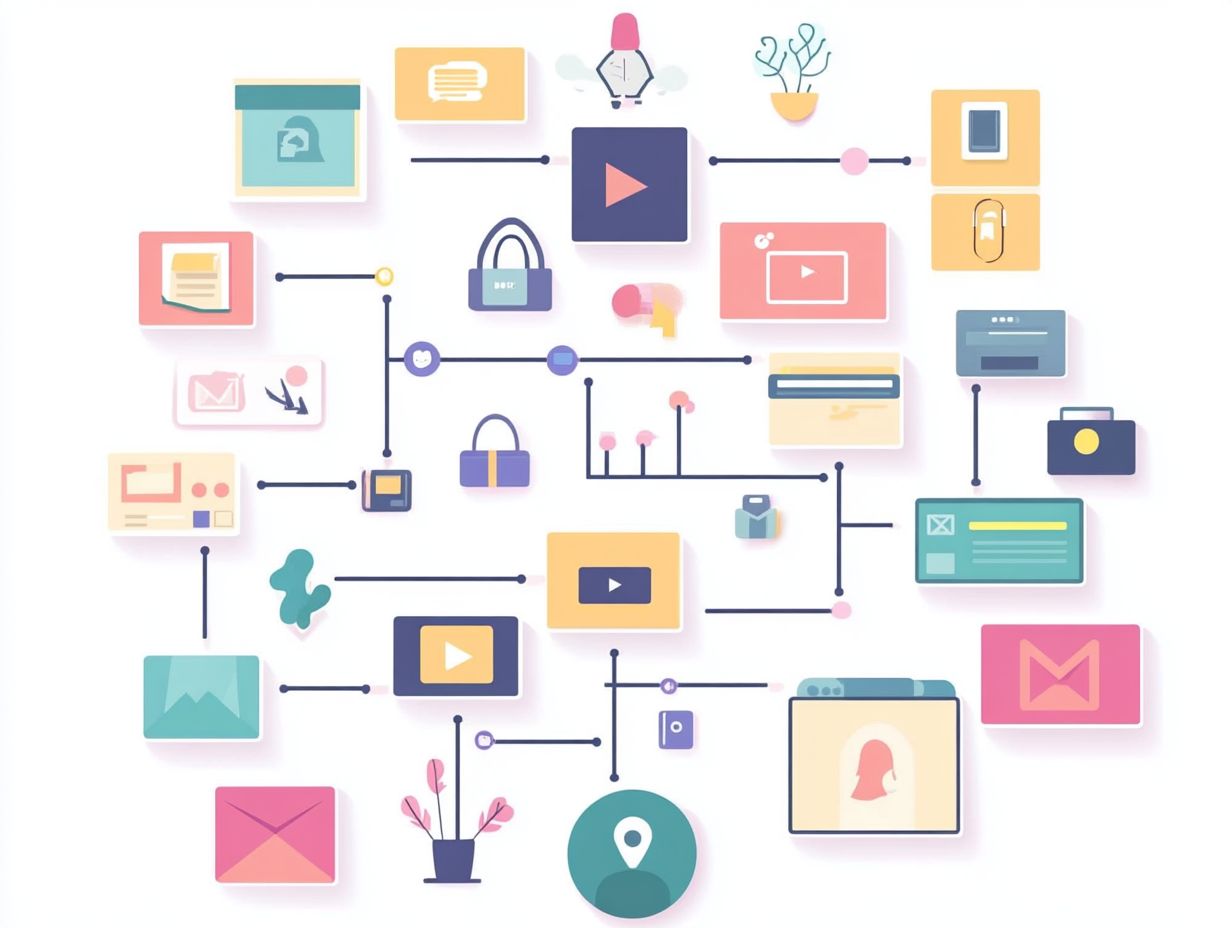
- Understand the customer journey to create engaging content that resonates with your audience.
- A customer-centric content strategy involves identifying your target audiences and mapping content to each stage of their journey.
- Top, middle, and bottom of funnel content types serve different purposes and should be strategically used to guide customers towards conversion.
The Importance of Aligning Content with Customer Journeys
Aligning your content with the customer journey is essential for elevating your content marketing efforts. This alignment creates a seamless experience that skillfully guides potential buyers through the various stages of their journey.
By grasping the intricacies of the customer journey—from awareness to consideration to decision-making—you can craft targeted strategies that address the specific needs and pain points of your ideal clients. This thoughtful approach not only enhances user engagement but also cultivates brand loyalty and builds trust—key elements for converting leads into loyal customers.
Understanding the Customer Journey
The customer journey describes the process you undergo from recognizing a problem to evaluating potential solutions and ultimately making a decision. This intricate progression can be divided into three key stages: awareness, consideration, and decision-making.
Initially, during the awareness phase, you become aware of your challenges or needs, often triggered by specific pain points. It’s crucial for brands to deliver compelling content that resonates with these emerging concerns, thereby establishing that all-important initial connection.
As you transition into the consideration stage, you actively search for solutions, comparing various options available in the market. This phase underscores the importance of providing detailed product information, testimonials, and comparisons to address your concerns and clarify the benefits.
Finally, in the decision-making stage, factors such as trust and value become paramount. This highlights the necessity for brands to create persuasive content that reinforces their credibility and showcases how their offerings align perfectly with your needs.
Creating a Customer-Centric Content Strategy
A customer-centric content strategy is vital for businesses aspiring to connect deeply with their target audience. By prioritizing the creation of valuable and relevant content, you can effectively address the needs of your ideal client and ensure alignment with their detailed profile of your ideal customer.
This approach fosters engagement and builds meaningful relationships, allowing your brand to truly resonate in a competitive landscape.
Identifying Target Audiences
Identifying your target audience is the cornerstone of a successful content marketing strategy. This crucial step allows you to tailor your messaging and create content that truly resonates with your audience’s needs and emotional triggers.
By diving into comprehensive market research and developing detailed profiles of your ideal customers, you can uncover valuable insights into demographics, preferences, and pain points. These personas act as your guiding compass, enabling you to craft content that speaks directly to your ideal customers. Understanding the unique motivations and challenges of your prospective clients informs your content creation and boosts your campaign’s effectiveness, ensuring that every piece serves a specific purpose.
When your content aligns with audience expectations, it creates stronger connections, ultimately driving both loyalty and conversions.
Let's Set Up Your Lead Generation Strategy
Fill out the form below, and our team will get in touch with you to create a tailored solution for your business.
Mapping Content to Customer Journey Stages
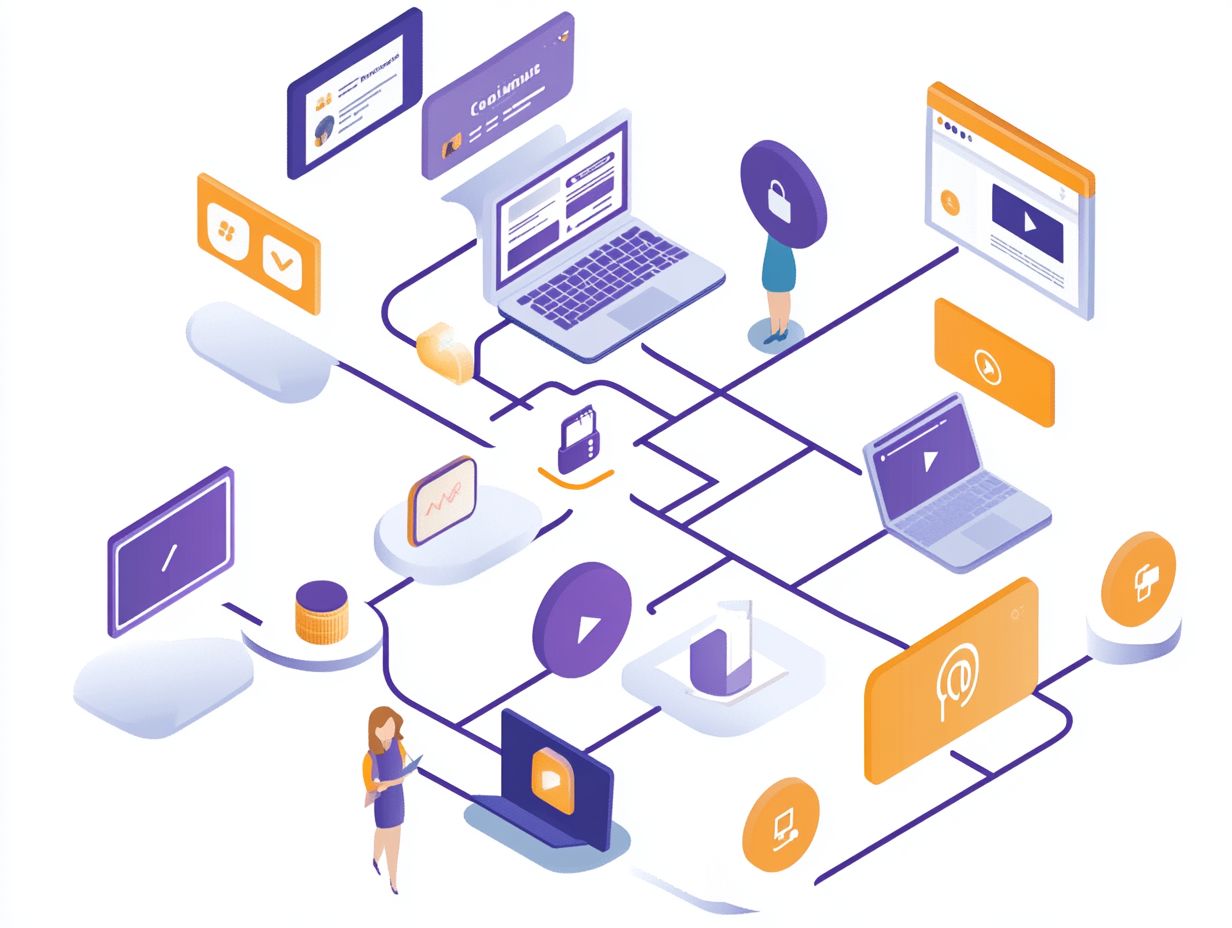
Mapping your content to the various stages of the customer journey is essential. It ensures that your prospects receive the right information precisely when they need it, guiding them smoothly through the buyer’s journey.
Knowing how to tailor your content can really improve engagement and boost conversions. In the awareness stage, captivating blog posts and engaging social media posts draw potential customers in, addressing their initial questions and pain points.
As they transition to the consideration stage, you can introduce more in-depth resources such as ebooks, webinars, and comparison guides to assist them in evaluating their options. When they reach the decision stage, testimonials, case studies, and detailed product demos become crucial in building trust and encouraging sales.
Throughout this journey, nurturing leads with targeted emails and personalized content reinforces relationships and enhances each interaction, ensuring that every touchpoint is optimized for success.
Effective Content Types for Each Stage
By employing effective content types that align with each stage of the customer journey, you can markedly boost engagement and conversion rates. This smart strategy empowers potential buyers with the knowledge they need to make great choices!
Top of Funnel Content
Top-of-funnel content is crafted to elevate awareness and entice potential buyers into the marketing funnel. Initially, during the awareness phase, potential customers become aware of their challenges or needs, often triggered by specific pain points and problem awareness. This content comes in many forms, including insightful blog posts that offer valuable knowledge, visually engaging infographics that distill complex data into digestible pieces, and captivating social media posts that pique curiosity.
By appealing to a broad audience, this content builds brand awareness, attracting individuals who may not yet recognize their specific challenges or are simply exploring their options.
Through a consistent and relevant approach, these top-of-funnel materials spark conversations, encouraging potential customers to engage with the brand, seek additional information, and gradually move toward more tailored solutions as they navigate their buyer’s journey.
Middle of Funnel Content
Middle-of-the-funnel content is designed to engage individuals who are already aware of their challenges and are actively evaluating potential solutions. This stage is essential for guiding them toward making informed decisions.
At this level, effective content types include:
- Case studies, which highlight real-world applications and success stories that resonate with your situation.
- Webinars that provide direct insights from experts, giving you the knowledge you need.
- Comparison guides that act as invaluable tools, clearly laying out the pros and cons of various options available in the market.
Using these types of content fosters trust and confidence, ensuring that your audience feels well-supported as they navigate their choices.
Bottom of Funnel Content
Bottom-of-funnel content is absolutely essential for boosting your conversion rates. It delivers the final pieces of information needed to persuade potential buyers to make a decision, often featuring compelling calls to action for this specific type of content. Think product demos, customer testimonials, and calls to action for sales calls or free trials. This type of content plays a pivotal role in nurturing those prospects who are on the verge of making a purchase.
When you view a product demo, you get a clear picture of how the solution operates in real-world scenarios. Testimonials from satisfied clients further enhance trust, reinforcing your willingness to invest. Thorough service descriptions offer clarity on features and benefits, addressing any lingering doubts you might have. Since this content is carefully designed to help you make informed choices, it effectively steers you toward conversion, ultimately contributing to your business success.
Strategies for Measuring and Improving Content Alignment
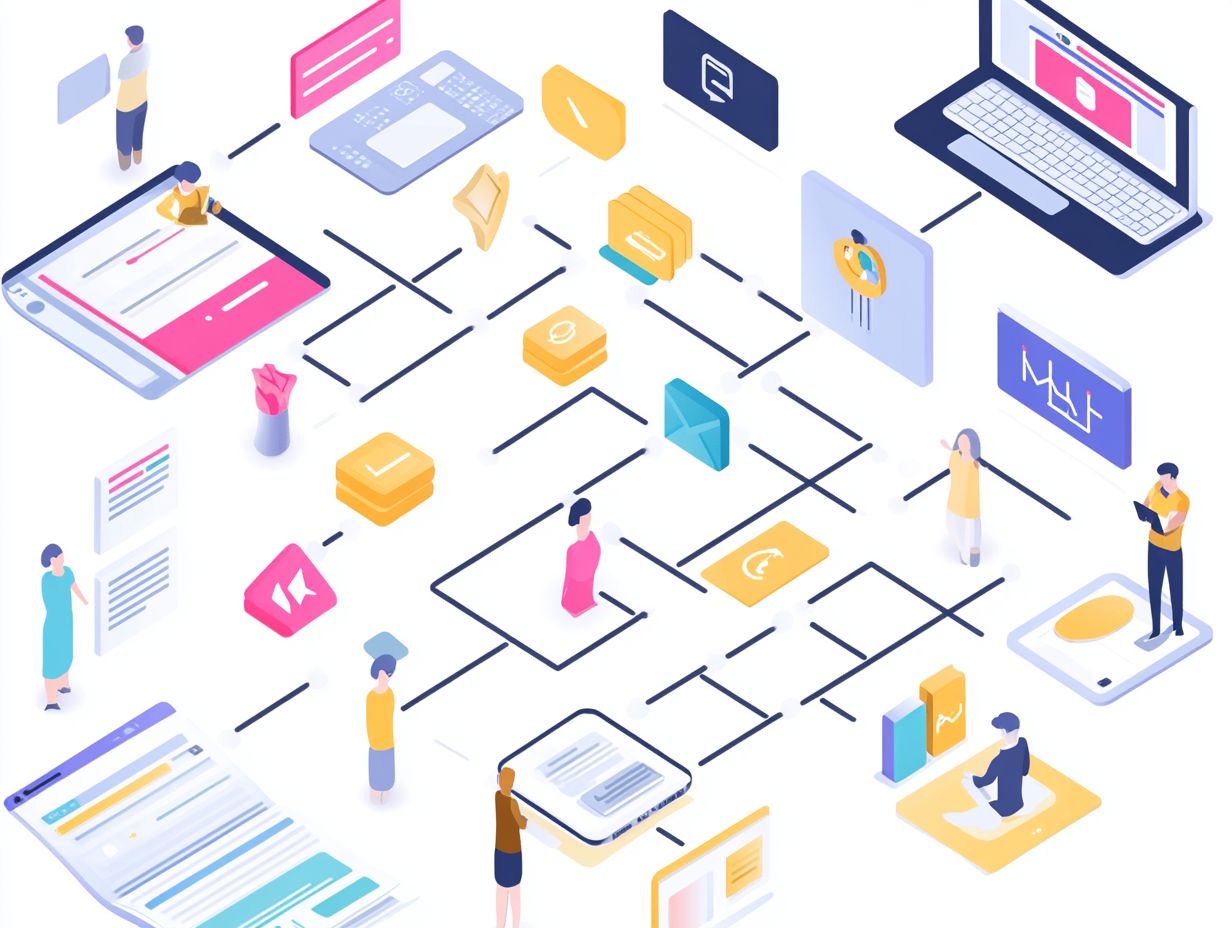
Let's Set Up Your Lead Generation Strategy
Fill out the form below, and our team will get in touch with you to create a tailored solution for your business.
Implementing effective strategies to measure and enhance the alignment of your content with the customer journey is crucial for sustained success. This approach allows you to refine your content strategies based on tangible metrics and authentic customer feedback, ensuring that your efforts resonate deeply with your audience.
Key Metrics to Track
Tracking key metrics is essential for assessing how well your content aligns with your audience’s needs. Conversion rates and user engagement stand out as primary indicators of success. This highlights the necessity for brands to create persuasive content that reinforces their credibility and enhances the customer experience.
Beyond these, there are several other critical metrics to keep in mind, such as bounce rates, time on page, and social shares. Each of these metrics provides unique insights into how effectively your content resonates with your audience. By analyzing bounce rates, you can determine whether users find your content engaging enough to stick around. Measuring the average time spent on a page reveals the depth of their interest, while social shares indicate how well your content engages in broader conversations.
Together, these metrics not only refine your content strategies but also enhance overall customer engagement, ensuring that you consistently meet your audience’s needs.
Optimizing Content for Better Alignment
Optimizing content to align more effectively with customer journeys requires a strategic approach that harnesses the power of SEO techniques and competitive analysis, all aimed at enhancing visibility and engagement.
This journey begins with meticulous keyword research, allowing you to pinpoint the terms that truly resonate with your target audience. By looking into what potential customers are actively searching for, you can craft materials that directly address their inquiries.
Implementing on-page SEO techniques, such as incorporating relevant tags that help search engines understand your content better and alt descriptions, significantly enhances your performance in search rankings. By benchmarking against competitor content, you can identify gaps and seize opportunities for improvement.
Your content strategy should closely match what users are looking for. This ensures that relevant keywords and entities are seamlessly woven together, fostering a more meaningful connection with your audience.
Frequently Asked Questions
What is the importance of aligning content with customer journeys?
Aligning content with customer journeys is important because it helps to enhance the overall customer experience and increase customer engagement. It ensures that your content is relevant and valuable to your target audience at every stage of their journey.
Act now to enhance your content strategy and capture your audience’s attention!
How do I identify the different stages of a customer journey?
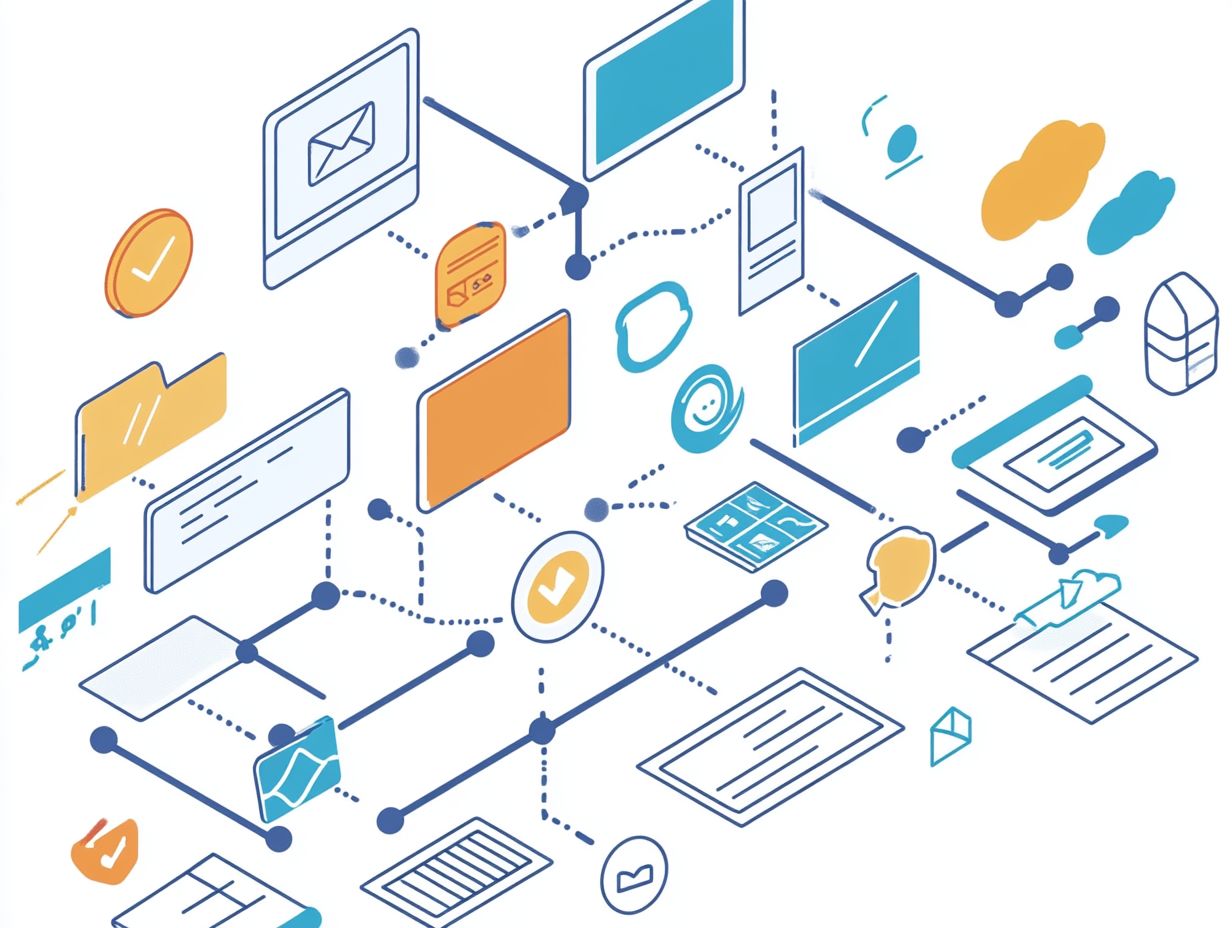
Start by mapping the entire experience your customer has with your brand. This includes stages like awareness, consideration, purchase, and post-purchase.
You can also gather feedback from customers and analyze their behavior to gain insights into their journey.
What are some tips for aligning content with customer journeys and lead nurturing?
Lead nurturing means building relationships with potential customers at every stage of their journey. Some tips for aligning content with customer journeys include:
Let's Set Up Your Lead Generation Strategy
Fill out the form below, and our team will get in touch with you to create a tailored solution for your business.
- Conduct thorough research on your target audience.
- Create personalized content for each stage of the journey.
- Use the appropriate channels for distribution.
It’s also important to track and analyze the performance of your content to make necessary adjustments.
Can I use the same content for all stages of a customer journey?
No, it is not recommended to use the same content for all stages of a customer journey. Each stage has different goals and needs; therefore, your content should be tailored to address them.
For example, content for the awareness stage should focus on educating and creating brand awareness, while content for the decision stage should provide more detailed information and encourage action.
How can I measure the success of aligning content with customer journeys?
Measure success by tracking engagement rates, conversion rates, and customer satisfaction scores.
You should also gather feedback from customers to assess their experience and make improvements as needed.
What are some common mistakes to avoid when aligning content with customer journeys?
Avoid key mistakes in aligning content with customer journeys:
- Understand your target audience.
- Create relevant content.
- Choose the right channels to distribute your content.
Don’t ignore the post-purchase stage! Keep providing valuable content to retain customers and boost their loyalty.
